Search Results for Tag: Global Media Forum
Market roundup: May 2017
Middle East
DW’s talk show for youth in the Arab world, Shababtalk, has been honored as the best Arabic talk show by the Arab States Broadcasting Union (ASBU). It is the third year in a row that Shababtalk has earned this distinction. The ASBU decision was especially motivated by a Shababtalk edition that focused on the role of Arab youth six years after the Arab Spring.
A report produced by DW in Baghdad with the support of Iraqi partner Al Rasheed TV also won a gold award from the ASBU. The emotional report was produced as part of Shababtalk’s tour of the Arab world last year and profiled a developmentally disabled Iraqi girl . Shababtalk is expected to go on tour to six locations in the Arab world in 2017.
Europe
Leading Lithuanian broadcaster INIT TV is providing 500,000 households around the country with the popular DW shows Focus on Europe and Europe in Concert. Focus in Europe will be broadcast with a Lithuanian voice over and Europe in Concert is also being shown on INIT’s music channel, PLAY TV.
North America
The 2017 DW Freedom of Speech award will be given to the White House Correspondents’ Association (WHCA). The DW Freedom of Speech Award honors a person or initiative that provides an outstanding example for freedom of expression and human rights. DW said the WHCA had established a new benchmark in holding US leadership accountable.
With the award DW recognizes the important work of ensuring clarity and transparency from an increasingly uncooperative US presidential administration and amid accusations of “fake news” and attacks on journalistic integrity. WHCA President Jeff Mason will receive the award at the Global Media Forum on June 19.
Telling stories with virtual reality
What if you could feel what it is like to be there as news happens? Using new virtual reality tools, journalists can recreate news worlds and users can interact directly with the environment.
DW’s Innovation projects team presented this technology at the Global Media Forum and allowed the audience to experience the latest applications and devices.
It is striking how a virtual reality story creates a sense of presence and forces people to think differently about a story. Users can experience the news as a protagonist, and encounter jarring emotions and sensations. The meaning of a story is transferred directly by the medium and the information becomes an accessory, just like in real life.
A best practice example of applying virtual reality technology to journalism comes from the Guardian in their report on solitary confinement. The multimedia story, “6 x9: explore solitary confinement in 360”, expresses how solitary confinement could be considered torture by combining first-hand reports with the VR experience of being confined to a cell 23 hours a day. Another example, Harvest of Change, from the Des Moines Register in the United States, explores issues reshaping farming in America.
This user experience is becoming more accessible because a variety of virtual reality accessories for mobile devices are more affordable.
Wireless virtual reality headsets are set to grow in popularity according to analysis from DW Innovation. Immersive info-graphics providing data on top of a virtual environment could be another big opportunity to translate complex stories to a wider audience in a visually appealing way. In an early VR experiment, DW Innovation cooperated with the Berlin VR start-up VRagments to visualize parts of the new Berlin Airport (BER), which is still under construction.
As the trend in virtual reality news progresses, innovators like those at DW will be asking how to create and improve virtual reality stories that address what viewers want and uncover their interests to intimately depict important stories.
Three innovations that are reshaping journalism
Artificial intelligence, data technology and mobile devices have huge potential in advancing the way journalists use and disseminate information. However, bringing innovation into newsrooms requires streamlined applications that journalists can easily use. With a wide network of partnerships and many big ideas, DW’s innovation team is working on an array of research projects to develop tools that will be changing how we produce and consume journalism. These projects were on display at the “Innovation Lounge” during the 2016 Global Media Forum, where guests could experience new tools and technologies hands on.
After looking at the research and development being done at DW Innovation, it becomes clear that journalists need solutions for using and interpreting large amounts of data and information coming from many sources, languages and formats. There is more information available than ever before and the key is turning information into interesting stories.
Natural Language Generation (NLG) technology, being pioneered by start-ups such as Narrative Science, turns data into readable reports. Applying this to journalism, DW’s innovation team is currently working on a new project called PollyVote, which for the first time is developing tools to transform polling data into automated news reports for the 2016 US presidential election. Research done by DW Innovation indicates audiences tend to respond positively to these automatic reports, citing a study that ranked them as informative, trustworthy and accurate.
Besides having raw data as useable information, journalists also have a huge variety of news sources at their disposal. At the intersection of big data, automation and multimedia production is News Stream, a joint project being developed by Fraunhofer IAIS, Neofonie GmbH, dpa and DW.
News Stream combines multimedia sources on one platform so journalists can quickly find exactly the information they need to create the best possible content. From pinpointing audio clips to digging quotes out of manuscripts, journalists can access all possible content on a news item in one place.
For example, News Stream uses voice recognition technology that can identify the subjects voice in a recorded press conference and send an automatic e-mail to the journalist with the desired quote. It also allows for automated research covering social media, agency sources and other news outlets. Journalists can even monitor in real time how the competition is reporting on a news item in real time.
According to the team at DW Innovation, at the moment News Stream has the potential to help journalists create better content more efficiently, but the most important step still is integrating these tools into newsrooms.
Adding to the journalists’ innovation toolbox along with raw data aggregation and source integration are methods for working with social media and eyewitness media as a news source. Both present problems of verification, but are becoming indispensible for fast-breaking news stories.
Reveal is a EU-supported project focused on dealing with social media verification. Multiple partners, including DW Innovation, work on tools, methods and technologies that will support journalists with the verification of online news items.
As part of the project, DW Innovation has developed a verification checklist for DW and media partners like ARD and EBU that outlines the fundamentals of how to use eyewitness material in news reports. This helps journalists everywhere make better decisions about breaking news content and produce trustworthy reports. There is furthermore a growing niche verification industry with examples like First Draft News, which brings together a variety of verification resources, or Storyful, which curates viral content and provides verification of UGC and social content for news outlets.
In order to continue its work in this field, DW Innovation has secured funding from Google’s Digital News Initiative (DNI) to build a collaborative social media verification platform and to launch another EU co-funded project called inVid,which specifically develops tools and workflows for video verification.
As the public comes to expect better data journalism and different ways to experience news, these types of innovations that are pioneered at DW will be growing in relevance and presence across our media landscape.
Eco Heroes: A hands-on approach to environmental activism in Africa
At DW’s annual media conference, the Global Media Forum, Nigerian “Eco Heroes” appeared in a panel discussion hosted by Eco@Africa anchor Nneota Egbe to share their ideas and insight into environmental problems affecting Nigeria. The Eco Heroes share a common passion for raising environmental awareness and helping their communities through activism and innovation.
DW’s environmental program Eco@Africa shows the world that environmentally conscious innovation and development starts with people and communities. The coproduction from DW and Channels TV in Nigeria showcases both problems and solutions involving an array of environmental issues in Africa and Europe.
Environmental problems in Nigeria combine social, political and technical issues that the Eco Heroes addressed during their discussion. One pervasive environmental problem in Nigeria is plastic waste. Eco Heroes Bilikiss Adebiyi and Yahaya Ahmed, both take this on in creative and unexpected ways. Coca Cola alone sells around 4 million plastic bottles a week in Nigeria and the empty bottles can be put to good use. Adebiyi created an incentive for recycling by founding WeCyclers – a bicycle-powered recycling service in Lagos for densely populated and low-income neighborhoods. For their recyclable items, households receive reward points that they can exchange for goods and services – keeping plastic out of landfills and raising awareness in the community.
Ahmed, CEO of the Development Association for Renewable Energies (DARE) takes the bottles whole, fills them with sand and uses them in constructing homes, walls and water containers. DARE also looks at the social aspects of environmental problems and recruits people who have had to leave their homes because of increasing desertification.
The Eco Heroes also emphasized that social awareness is a crucial part of environmentalism in Africa. Each of them spoke about putting problems in terms that people can understand. For example, rather than talking about the “environment”, Desmond Majekodunmi said he prefers to think of a “life support system”– an idea that encourages people to act with care. He said educating children on environmental issues and doing simple things like planting trees are tangible ways to address such large problems.
A holistic approach to environmentalism combines social and structural issues. Priscilla Achapka, Executive Director of the Women Environmental Program, warns of a “social time bomb”, as lakes dry out and populations are forced together. Her work focuses on teaching women who run households sustainable solutions to everyday issues, which will create better living spaces in communities that will be growing closer together.
The Eco Heroes agreed that the media is essential for making these complex problems understandable and conveying essential information for environmentally conscious living. They praised DW, Channels TV and Eco@Africa for cooperating and helping to make a valuable contribution to raising awareness and spreading a positive message.
Eco@Africa has also proven to be a big success with audiences Nigeria. And after a successful start there, the show will soon be expanding to Kenya. Kenya Television Network (KTN) will be the new broadcasting partner for the show in East Africa. The expansion will provide a source of information that can make a positive difference to communities across the region. KTN has been a DW programming partner since 2012.
Finding allies in the cat and mouse game of censorship in Iran
In places where media freedom is guaranteed, censorship isn’t given a second thought. In places like Iran, people confront it every day. On television, newspapers, radio and online censorship in Iran is everywhere. There is a war of information in Iran with propaganda adding to the oppression of free information. People try and find information on the one side, and the government tries to stop it on the other.
In Iran, DW’s online content in Farsi has seen huge leaps in usage since Iranian authorities clamped down on the Iranian internet. By using circumvention techniques like Psiphon, DW has been able to provide people in Iran with unbiased news coverage. But it is a game of cat and mouse , and the rules change constantly. What worked a year ago often has to be changed. DW keeps up with the latest technology and has many partners with the same goal.
DW is joined by a group of international broadcasters known as the DG 7, which includes the BBC and France Médias Monde that meet and work together regularly to create solutions together and keep up with fighting censorship around the world.
Joining a plenary discussion on censorship at this year’s Global Media Forum is the Iranian journalist Arash Sigarchi. He is now Web Manager of Voice of America (Persian) in the USA. He was imprisoned for three years in Iran for using a blog and telephone interviews to try and get around government censorship. Now Sigarchi says that new possibilities of social media give people many ways to freely share information. This and the consistent effort of international broadcasters like DW to get through to people all over the world, can help ensure the future is built on truth.



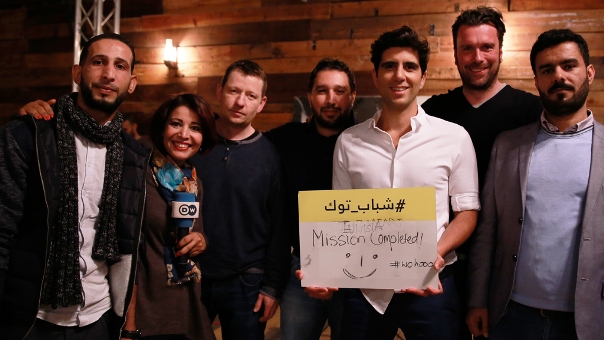

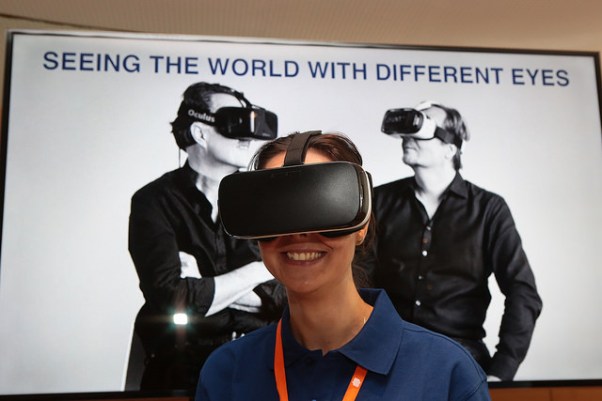
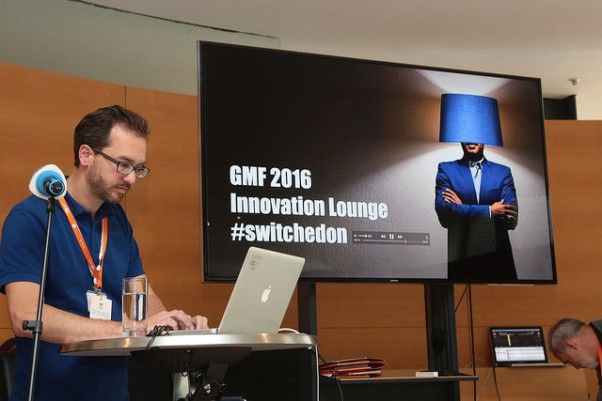
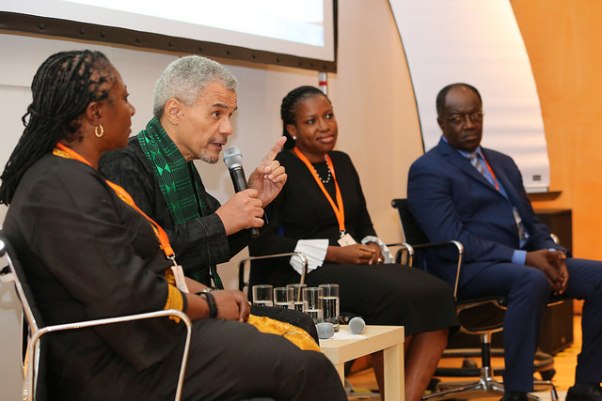
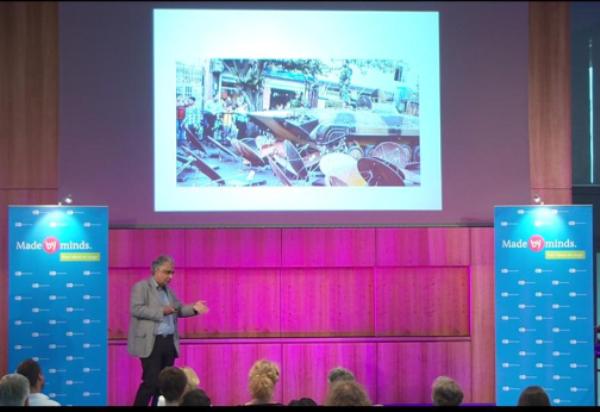




Feedback